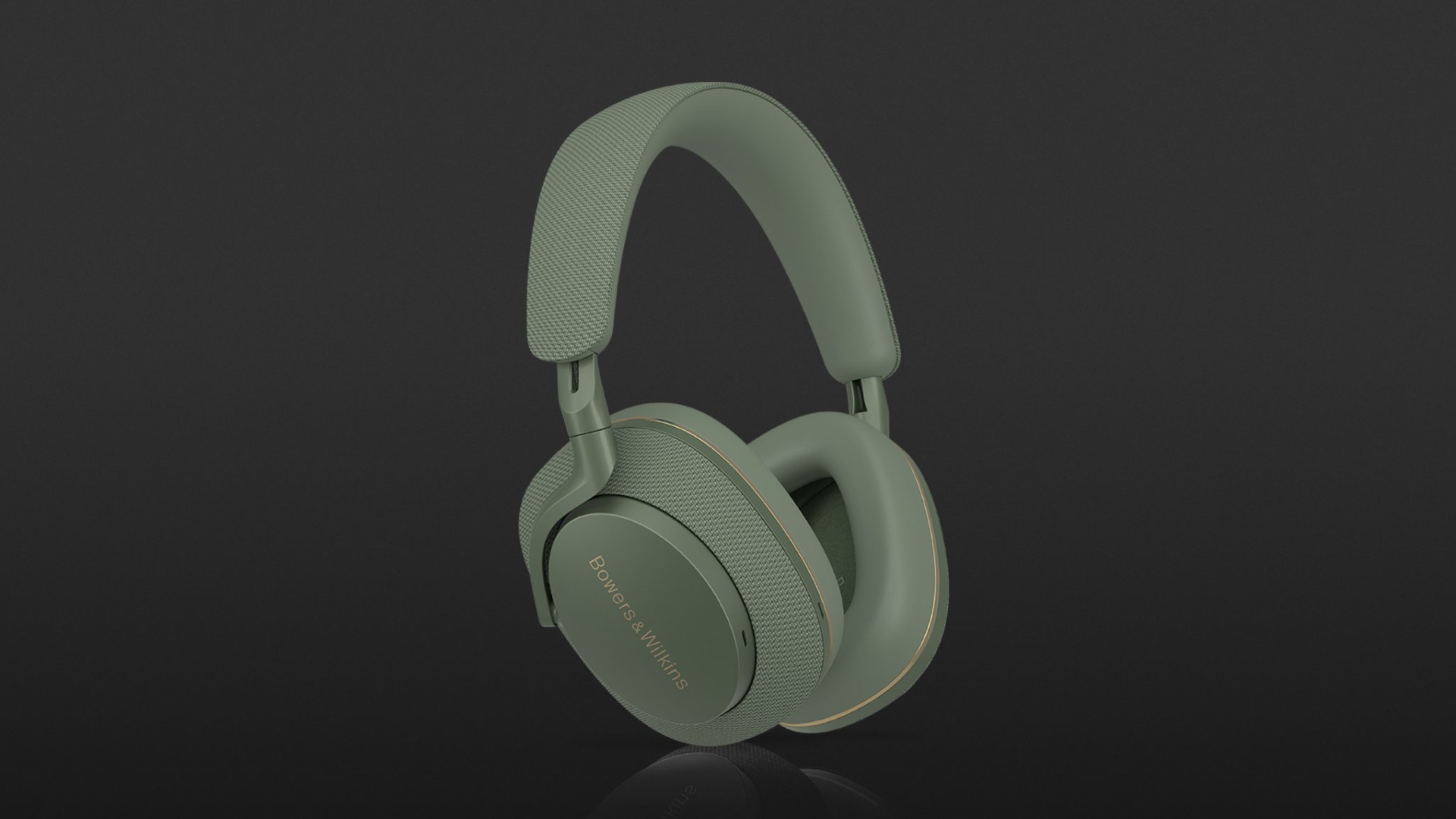With the Px7 S2e, Bowers & Wilkins has made very good headphones ever so slightly better. Thanks to fresh DSP power, the sound gets a further upgrade, and the Noise Cancelling and Transparency Mode also benefit from the technical upgrade.
- Even better sound
- Good noise canceling
- Hi-Res audio
- USB-C to analog audio
- USB-C audio
- Multipoint
- Relatively high price
Bowers & Wilkins have upgraded their Px7 S2. Firstly, cosmetically, with the new “Forest Green” colour variant, which makes no further testing necessary, and secondly, with new digital signal processors, which – to put it bluntly – provide excellent sound.
Without DSPs, headphones – even those in the top class – would fail miserably when tested. And the more powerful those DSPs are, the more sound voodoo can be integrated into the headphones. And last but not least, Noise Cancelling or Transparency Mode requires quite a bit of computing power to make headphones sound the way they do.
So, one year after their release, Bowers & Wilkins has given the Px7 S2 new DSPs that are meant to further enhance the already good sound. Apart from that, everything remains the same, which is why, with a gentle reminder of our test of their predecessor, we’re going to go straight to the sound level.
Sound comparison: Bowers & Wilkins Px7 S2e vs. Px7 S2 vs. Px7
When the Bowers & Wilkins Px7 S2e reached our editorial office, we asked the manufacturer to provide us with another pair of Px7 S2s for a listening comparison. Unfortunately, this was no longer possible, so we had to obtain a pair of Px7 S2s in a roundabout way. Without being able to hear the sound evolution in direct comparison, an evaluation “from memory” was hardly possible. In the meantime, we dug out our four-year-old original Px7s, that we had been using as reference headphones for some time, and compared them directly with the 2023 Px7 S2e.
It was quite amazing how the sound had changed within the series. The “old” Px7 still had an objectively “harder” driver when compared to its successors and delivered (subjectively) – in addition to a slightly more uncomfortable wearing experience – a rather “pitchy” sound. Compared to the Px7 S2e, this was evident in the bass, which was “knobbly” rather than smooth. The newer Px7 models also took some of the sharpness out of the treble and edged towards silkiness.
Back in the day, we liked both sets of headphones so much that they received full marks for sound, which was absolutely justified in the context of the time. Today, I probably wouldn’t give the original Px7s 5 stars – certainly not since I heard the Px7 S2e compared with the one year older Px7 S2.
For comparative listening, we started our Spotify playlist in parallel via two players and put one stream on the Px7 S2, the second on the Px7 S2e – both without HiRes audio codec in the highest possible Spotify quality.
Something quickly became apparent: the signature of the Px7 S2e was very similar to the previous model, but it could process more audio information and, in this sense, sounded better. Although we were on the same level with 16 bit/44.1 kHz, the S2e worked out sound information better.
This applied to all genres, such as the film score “The White Tree” by Howard Shore, where the strings sounded even more dense and silky. The deep bass on “Music Hit You (with Jah Batta)” was reproduced as more “knobbly” by the Px7 S2s than by the UR-Px7s, but the Px7 S2es clearly delivered the additional resonant tone that was inherent to the bass.
On the Dire Straits classic “Sultans of Swing”, the Px7 S2e also caught a few more bits of information that added a nuance of depth to the soundstage.
No wonder because, as mentioned at the beginning, more powerful DSPs offer more capacity to beautify the sound in real time. The Bowers & Wilkins developers have recognised this potential and incorporated it into a product upgrade without having to develop a completely new pair of headphones.
Improved noise-cancelling of the Bowers & Wilkins Px7 S2e
In terms of noise-cancelling, the Bowers & Wilkins Px7 S2e go one better than their predecessors but come only slightly closer to my personal favourites (Apple AirPods Max). The Px7 S2e were able to put pink noise in its place more distinctly. The Px7 S2e also let less traffic noise through than their predecessors.
We noticed a slight improvement in the transparency mode. Speech was also transmitted in higher quality with the headphones on when in “ambient pass-through” mode, although here, too, these Bowers & Wilkins don’t come close to the Bose QuietComfort Ultra Headphones which we tested recently.
Conclusion
There’s no reason to ditch the Bowers & Wilkins Px7 S2 and replace them with the Bowers & Wilkins Px7 S2e. If you already own this model, you will be just as happy with your headphones as buyers of the new 2023 edition. Both models are identical in construction, but the Bowers & Wilkins Px7 S2e offer very slightly improved sound, better noise cancelling and an optimised transparency mode thanks to the increase in DSP power.
Technical specifications
- Ear couplingOver-ear
- Typeclosed
- Transducer principledynamic
- Weight without cable307 g
- Cable length120 cm
What's in the box
- USB-C to 3.5mm stereo jack
- USB-C to USB-C cable
- Travel case
Special features
- Available in black, gray, green and blue
- BT- version: 5.2
- BT codecs: aptX Adaptive, aptX HD, aptX, AAC, SBC
- BT profiles: A2DP, AVRCP, HFP, HSP, BLE GATT











































